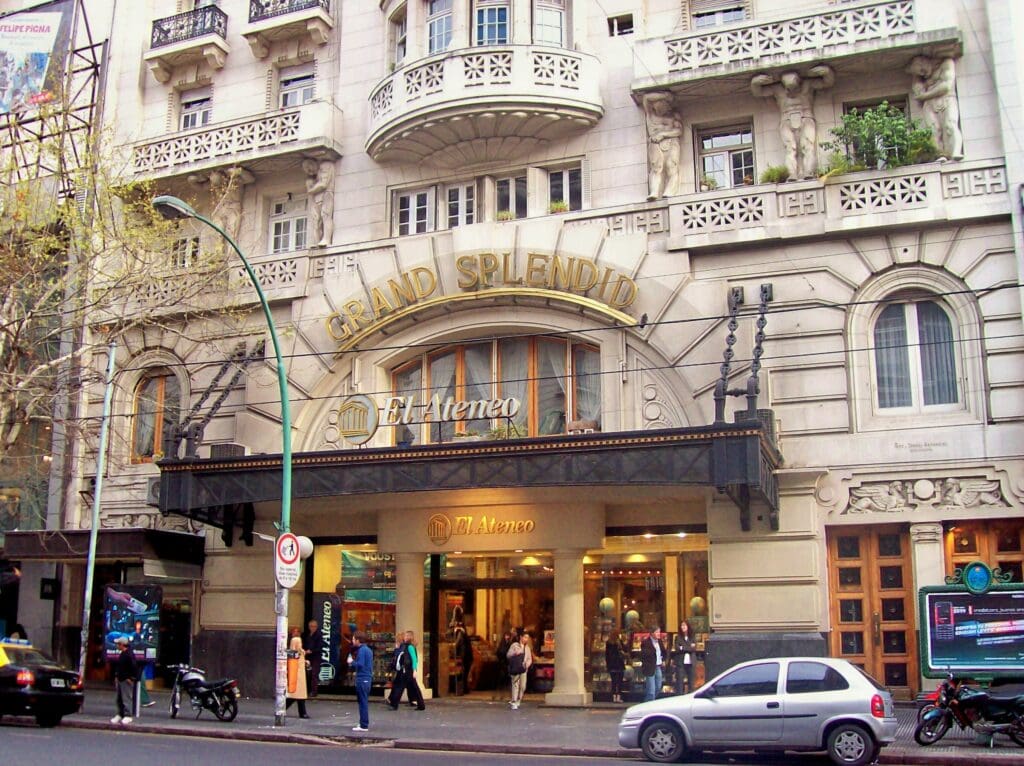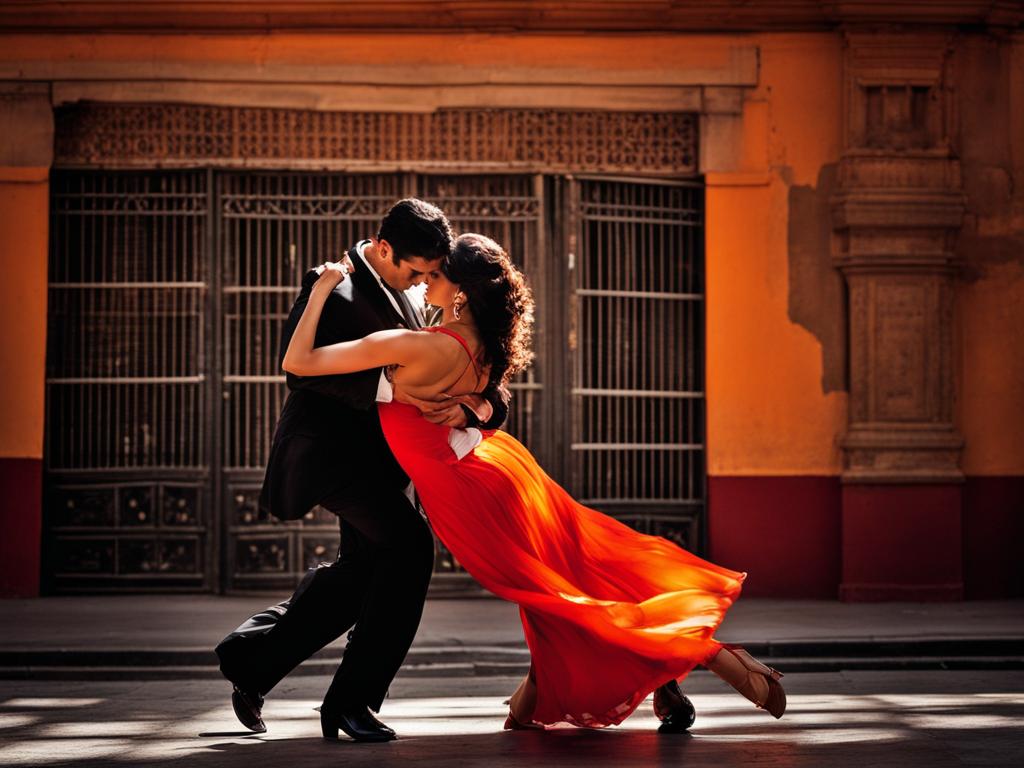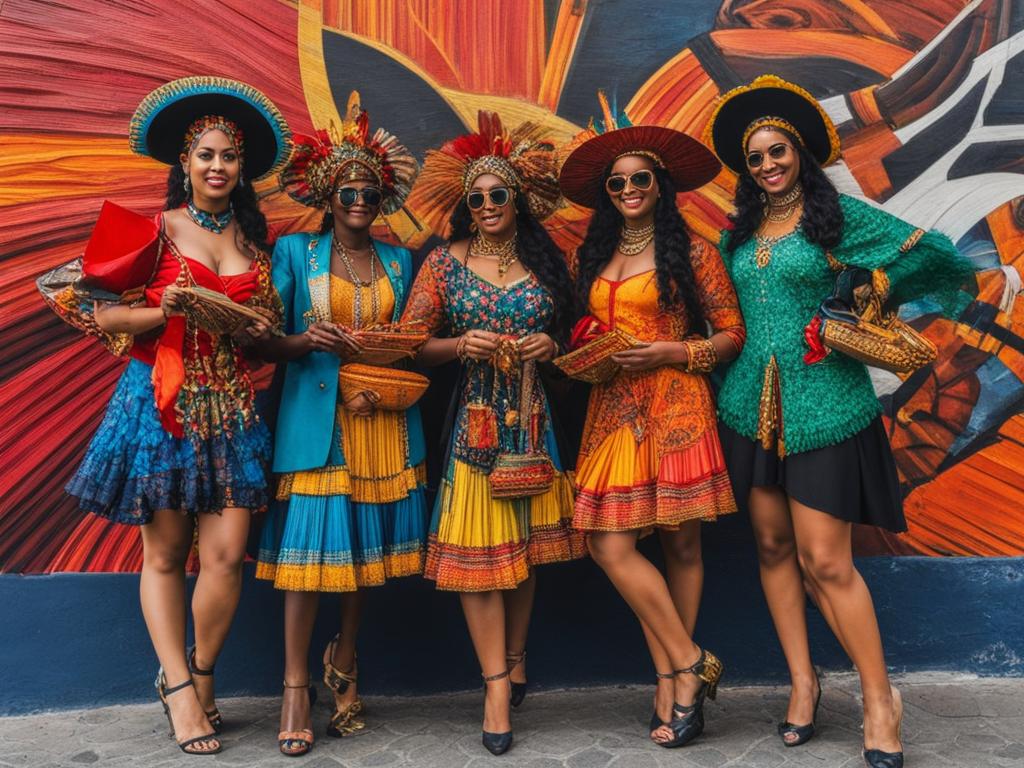Buenos Aires, the vibrant capital of Argentina, is a city full of surprises. Beyond its famous landmarks and bustling streets, there are countless hidden gems and fascinating facts that make this city truly unique. In this article, we will uncover 30 things you probably didn’t know about Buenos Aires, ranging from lesser-known historical tidbits to interesting cultural anecdotes. So, get ready to uncover the secrets of this enchanting city!
Key Takeaways:
- Discover the lesser-known facts and hidden gems of Buenos Aires
- Uncover interesting tidbits about the city’s history and cultural heritage
- Learn about Buenos Aires’ vibrant literary culture and iconic bookstores
- Explore the quirky charm of Recoleta Cemetery and its famous mausoleums
- Experience the passion and energy of Buenos Aires’ tango culture
The Quirky Charm of Recoleta Cemetery
Recoleta Cemetery is a fascinating and unique attraction in Buenos Aires. Known for its stunning architecture and famous mausoleums, it draws visitors from around the world. One of the most notable figures laid to rest here is Eva Peron, the iconic Argentine First Lady. Her mausoleum is a popular spot for tourists and admirers.
The cemetery’s beautiful surroundings and meticulously designed mausoleums make it a truly captivating place. In fact, Recoleta Cemetery has been recognized as one of the most beautiful cemeteries in the world by both the BBC and CNN. The intricate details of the tombstones and statues add to the charm and allure of the cemetery.
Visitors to Recoleta Cemetery can take a leisurely stroll through the narrow pathways, exploring the different sections and admiring the grandeur of the mausoleums. It is not only a place for reflection and remembrance but also a testament to the rich history of Buenos Aires. Whether you have an interest in architecture, history, or simply enjoy exploring unique attractions, Recoleta Cemetery is a must-visit when in the city.
Famous Mausoleums in Recoleta Cemetery
| Name | Notable Figure |
|---|---|
| La Paz Pantheon | Eva Peron |
| Rotunda de San Vicente de Paul | Carlos Pellegrini, former Argentine president |
| Mitre’s Pantheon | Bartolomé Mitre, former Argentine president |
| Heron’s Mausoleum | Ovidio Lagos, journalist and politician |
Also read about: Expert’s Guide to Avenida de Mayo in Buenos Aires Revealed
These mausoleums are just a few examples of the many remarkable tombs and memorials that can be found in Recoleta Cemetery. Each one has its own story to tell and contributes to the unique character of this historic site.
Buenos Aires: The City of Bookstores
Buenos Aires is a haven for book lovers, with a vibrant literary culture that permeates the city. With an impressive number of bookstores scattered throughout its streets, Buenos Aires has earned the title of the “City of Bookstores.” From cozy independent shops to grand establishments, the city offers a diverse range of spaces for bibliophiles to explore and indulge in their love for reading.
One iconic bookstore that stands out is the Ateneo Grand Splendid. Housed in a former theater, this magnificent bookstore attracts visitors from all over the world. The grandeur of the theater has been preserved, with the stage now converted into a cafe where customers can enjoy a cup of coffee while perusing the vast selection of books. The shelves stretch up to the ceiling, creating a truly awe-inspiring atmosphere that captivates every visitor.
But it’s not just the physical spaces that make Buenos Aires a literary paradise. The city’s reading culture is deeply ingrained in its residents. Book clubs, literary events, and author signings are regular occurrences, fostering a sense of community and celebration of literature. Whether you’re a fan of classic literature, contemporary fiction, or niche genres, Buenos Aires has a bookstore to cater to your literary tastes.


Table: Top Bookstores in Buenos Aires
| Bookstore Name | Location | Specialty | Website |
|---|---|---|---|
| El Ateneo Grand Splendid | Avenida Santa Fe 1860 | General books, bestsellers, coffee shop | www.elateneo.com |
| Libros del Pasaje | Thames 1762 | Independent books, local authors | www.librosdelpasaje.com.ar |
| Walrus Books | Pasaje Rivarola 389 | Used books, rare finds | www.walrus-books.com |
| Librería El Ateneo | Avenida Santa Fe 683 | Specialty books, academic titles | www.libreriaealateneo.com |
Also read about: The Ultimate Guide to the Comic Walk in Buenos Aires
Exploring the bookstores of Buenos Aires not only allows you to discover literary treasures but also provides insights into the city’s vibrant cultural scene. Whether you’re a dedicated reader or simply appreciate the unique charm of bookstores, a visit to Buenos Aires will satisfy your literary cravings and ignite your imagination.
Avenida 9 de Julio: The Widest Avenue in the World
Buenos Aires is a city known for its grandeur and impressive landmarks, and one of its most notable features is Avenida 9 de Julio. Spanning a total of 16 lanes, this iconic avenue holds the prestigious title of being the widest avenue in the world. As you navigate through the bustling traffic and towering buildings, you’ll be in awe of the sheer magnitude of this magnificent thoroughfare.
One of the highlights of Avenida 9 de Julio is the iconic Obelisco, a towering monument that stands proudly in the heart of Buenos Aires. This historic landmark serves as a symbol of Argentina’s independence and is a popular gathering point for locals and tourists alike. Its commanding presence adds to the grandeur of the avenue and creates a sense of awe and wonder.
Located along Avenida 9 de Julio is another architectural masterpiece, the Teatro Colon. Considered one of the world’s finest opera houses, this majestic theater is renowned for its exquisite design and acoustics. Attending a performance at the Teatro Colon is a truly unforgettable experience, immersing you in the rich cultural heritage of Buenos Aires.
Buenos Aires: A City Steeped in History and Cultural Heritage
Buenos Aires, the capital city of Argentina, is a vibrant metropolis that boasts a rich and unique history. From its iconic landmarks to its deep-rooted cultural heritage, Buenos Aires offers a fascinating glimpse into the past.
One of the most famous landmarks in Buenos Aires is the Casa Rosada, the pink-hued presidential palace. This iconic building holds great historical significance as it has witnessed countless political events and speeches throughout Argentina’s history. It serves as a powerful symbol of the country’s democratic traditions and resilience.
Another emblematic feature of Buenos Aires is the Obelisco, an imposing monument located in the heart of the city. Standing at a height of 67 meters, the Obelisco is a testament to Argentina’s national identity and a tribute to its achievements. It has become a popular gathering place for celebrations, protests, and demonstrations, serving as a poignant reminder of the city’s social and political heritage.
The Origins of Tango: A Cultural Treasure
No discussion of Buenos Aires’ cultural heritage would be complete without mentioning the birthplace of tango. Originating in the late 19th century within the city’s working-class neighborhoods, tango is a passionate and sensual dance that has become synonymous with Argentine culture. Its roots can be traced back to the diverse communities that settled in Buenos Aires, including immigrants from Europe and Africa.
The traditional dance developed as a way for immigrants to express their longing, joy, and sorrow. Over the years, tango evolved, gaining popularity among the upper classes and eventually capturing the hearts of people around the world. Today, Buenos Aires is renowned for its tango clubs, music, and dance performances, allowing visitors to immerse themselves in this captivating cultural expression.


| Table: Cultural Heritage | Key Highlights |
|---|---|
| Historic landmarks | Casa Rosada, Obelisco |
| Cultural expression | Tango origins and traditional dances |
| Symbolic significance | Preservation of national identity |
Buenos Aires: A Multicultural Melting Pot
Buenos Aires is a vibrant city that embraces multiculturalism and celebrates its diverse communities. Influenced by its European heritage, the city showcases an enchanting blend of cultures, making it a truly unique destination.
The European Influence
The European influence in Buenos Aires is evident in its architecture, cuisine, and customs. The city’s strong ties to Spain and Italy have shaped its cultural identity, with European flavors permeating its culinary scene. From traditional Italian pizzerias to Spanish tapas bars, Buenos Aires offers a taste of Europe in South America.
Also read about: Discover Argentina’s Italian Heritage
A Thriving Jewish Community
Buenos Aires is home to one of the largest Jewish communities in Latin America. From historically significant synagogues to Jewish cultural centers, the city’s Jewish neighborhood, Once, is a testament to the community’s rich heritage. Visitors can explore Jewish museums, enjoy traditional Jewish cuisine, and participate in cultural events that highlight the community’s contributions to Argentina.
Polish and Arab Communities
In addition to the European and Jewish influences, Buenos Aires is also home to thriving Polish and Arab communities. These communities have preserved their cultural traditions, offering unique experiences to visitors. From Polish festivals that showcase traditional music and dance to Arab markets with exotic spices and goods, Buenos Aires continues to embrace its multicultural fabric.


| Community | Key Features |
|---|---|
| Jewish | Historical synagogues, Jewish cultural centers, Jewish museums, traditional cuisine |
| Polish | Polish festivals, traditional music and dance, cultural preservation |
| Arab | Arab markets, exotic spices, cultural traditions |
The Love for Mate: Argentina’s Herbal Drink
One of the most beloved traditions in Argentina is the shared love for mate, a traditional herbal drink that holds a special place in Argentine culture. Mate is not just a beverage, but a social ritual that brings people together, fostering connections and conversations among friends, family, and even strangers. It is a symbol of hospitality and community, often enjoyed in groups during social gatherings or simply as a way to relax and unwind.
The main ingredient of mate is yerba mate, which is made from the leaves of the native South American holly tree. The drink is prepared by placing the dried leaves in a hollowed-out gourd, known as a mate, and drinking it through a metal straw called a bombilla.
Mate drinking is deeply rooted in Argentine traditions and is a common sight throughout the country. People can often be seen carrying their mate gourds and thermoses filled with hot water, ready to enjoy this beloved drink at any time of the day. The act of sharing mate with others is a sign of friendship and camaraderie, a way to connect with others and strengthen social bonds. It is not uncommon to see groups of friends or colleagues passing around a mate, taking turns sipping from the shared gourd.
The cultural significance of mate extends beyond its social aspect. Many Argentines believe that mate has various health benefits, including boosting energy levels, aiding digestion, and improving mental focus. It is also considered a natural remedy for headaches and other ailments. Whether enjoyed in the comfort of one’s home or while exploring the bustling streets of Buenos Aires, mate remains an integral part of Argentine culture, embodying the warmth, hospitality, and traditions of this vibrant country.


Social Activism and Political Expression
Social activism is deeply ingrained in Buenos Aires’ culture, and the city has a long history of political engagement. From the student movements of the 1960s to the Mothers of the Plaza de Mayo who protested against the military dictatorship in the 1970s and 1980s, Buenos Aires has been at the forefront of social change in Argentina.
Visitors to Buenos Aires can immerse themselves in this vibrant atmosphere by attending protests, joining discussions at local community centers, or simply observing the dynamic street life. It is a city that welcomes political expression and encourages visitors to engage with the issues that matter most to its residents.
| Key Facts | Statistics |
|---|---|
| Protests per week | Over 30 |
| Causes of protests | Social justice, human rights, economic inequality, government policies |
| Famous social movements | Student movements, Mothers of the Plaza de Mayo |
| Symbols of activism | Colorful street art, community centers, lively discussions |
Conclusion
Buenos Aires is a city that has something to offer everyone, with its diverse range of highlights and memorable experiences. From exploring hidden gems like Recoleta Cemetery, where you can admire stunning architecture and learn about the city’s famous figures, to immersing yourself in the city’s unique culture, Buenos Aires promises an unforgettable visit.
One of the city’s biggest draws is its vibrant cultural scene, where you can indulge in the passion of tango and witness the city’s love for literature in its numerous bookstores. The multicultural melting pot of Buenos Aires adds to its charm, providing a rich tapestry of influences from European, Jewish, Polish, and Arab communities.
Whether you’re strolling through the wide avenues and marveling at iconic landmarks like the Obelisco, or sipping mate with locals and experiencing the warmth of Argentine hospitality, Buenos Aires is a city that will leave a lasting impression. With its hidden gems and unique culture, it is no wonder that Buenos Aires continues to be a top destination for travelers seeking an authentic and captivating experience.




